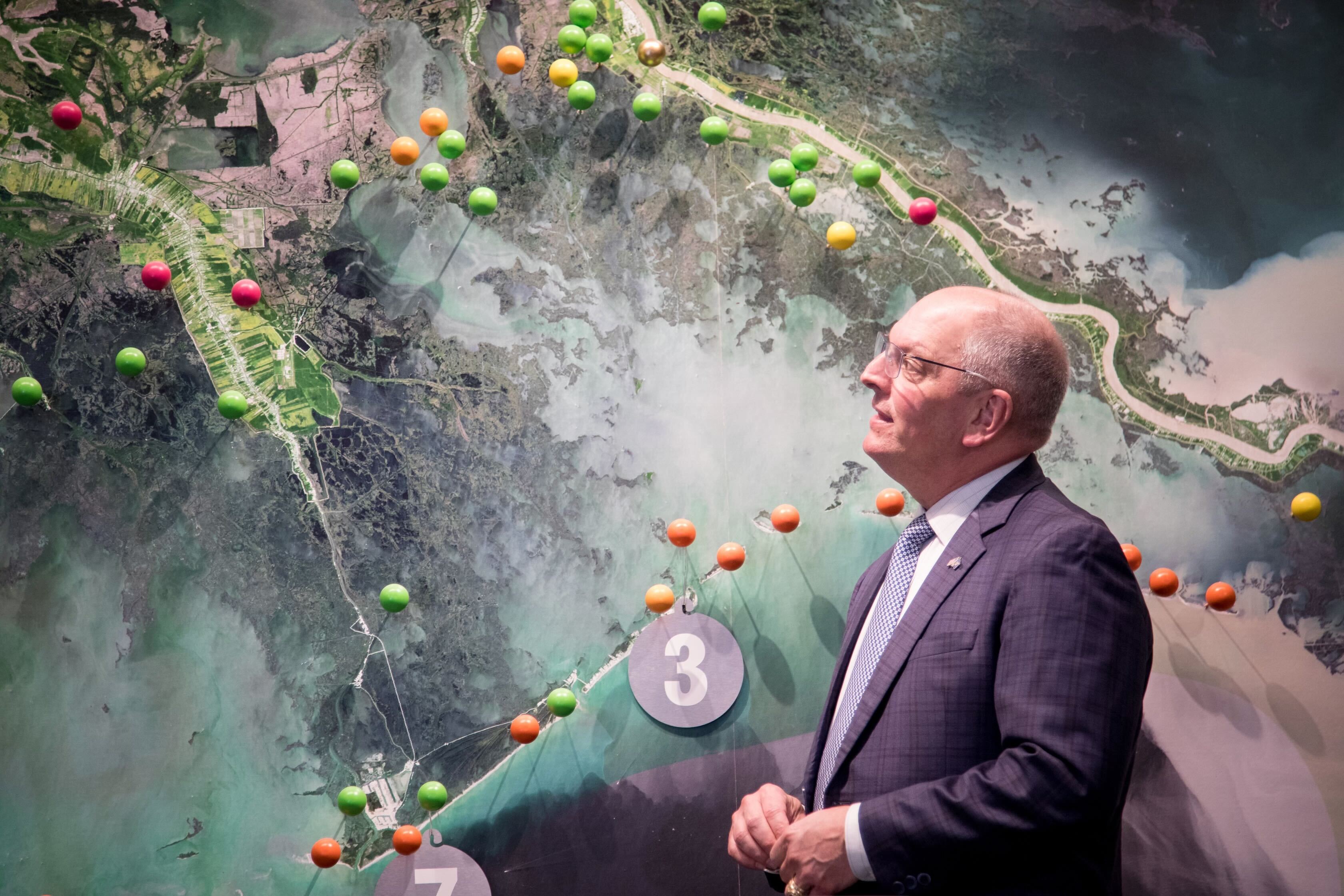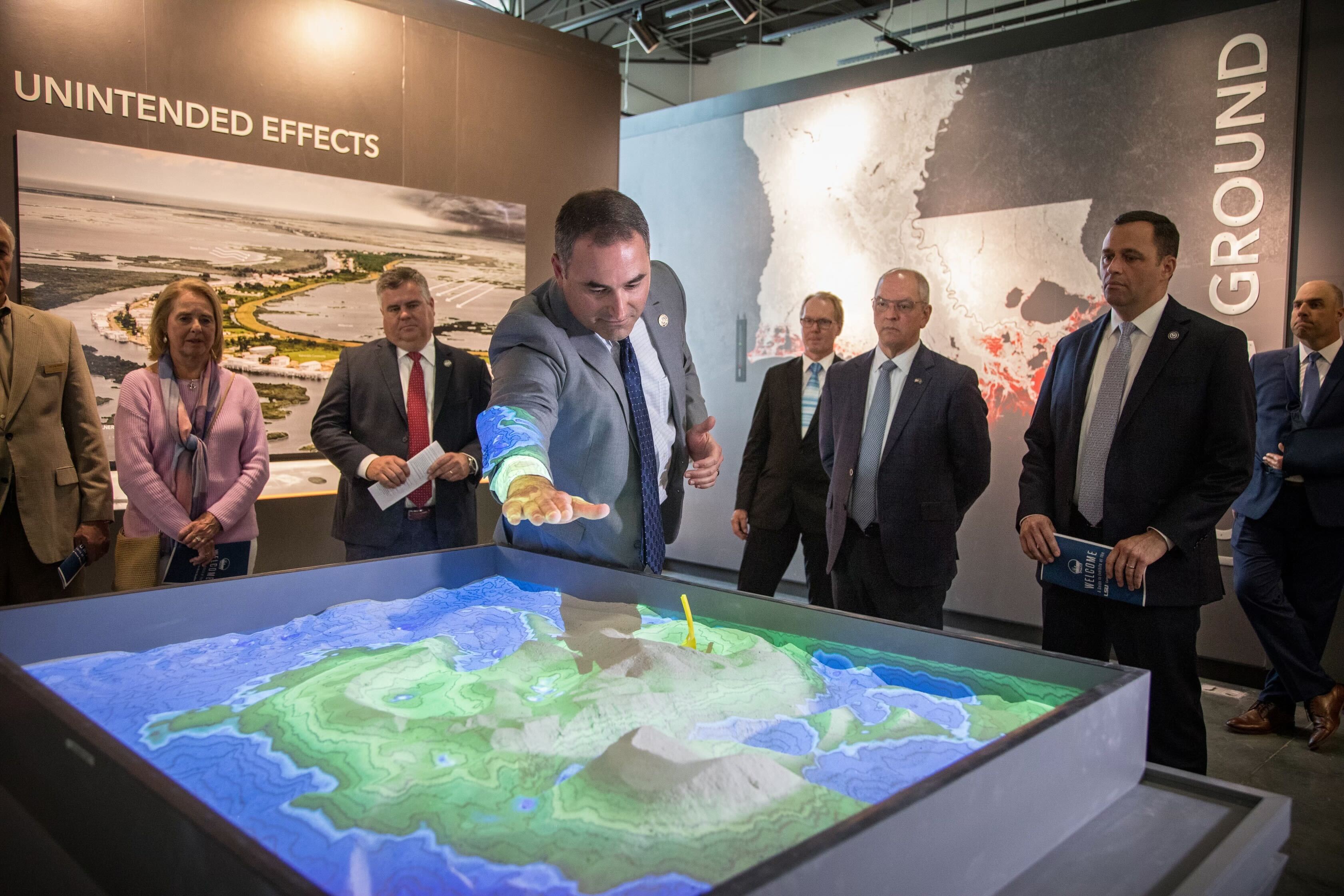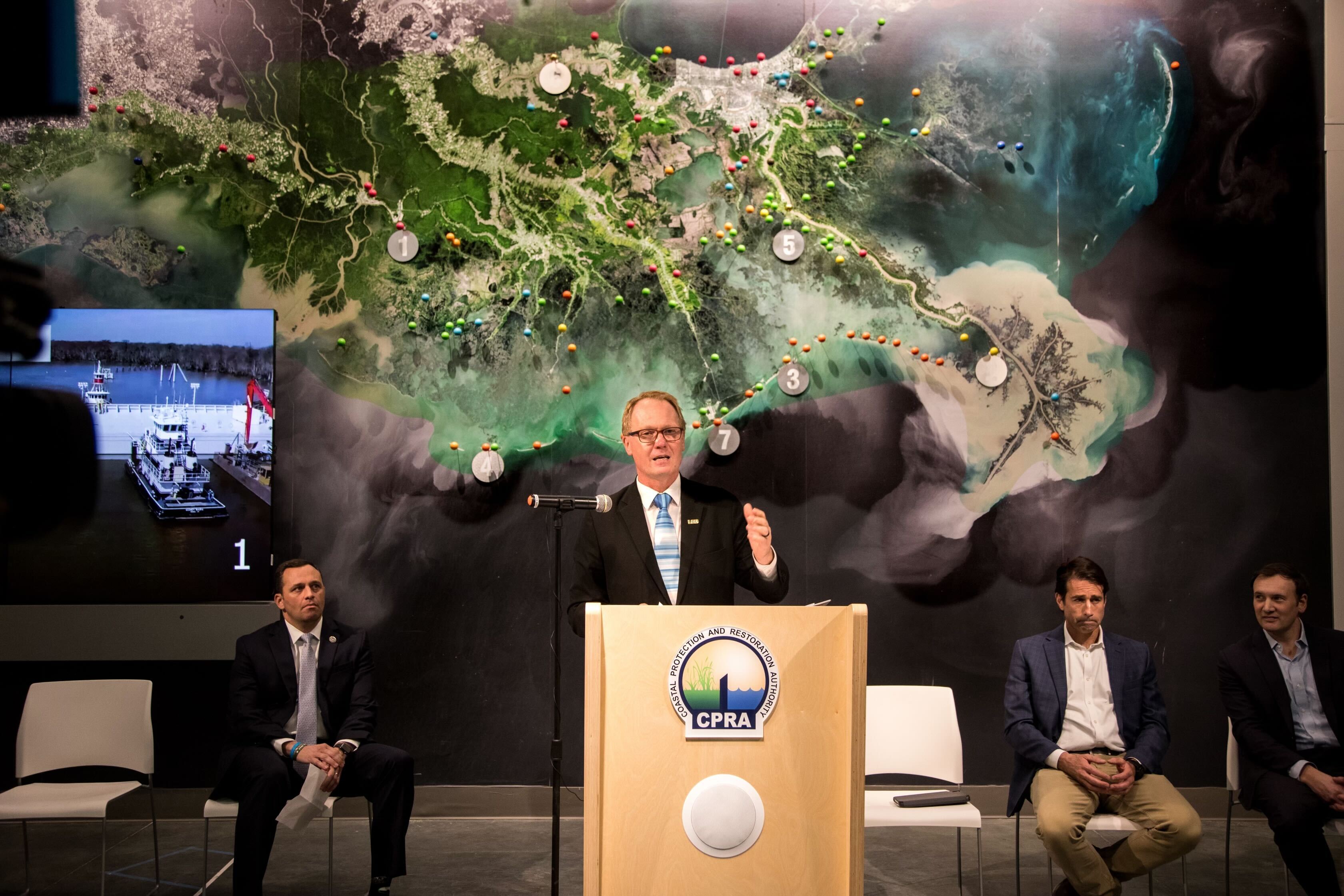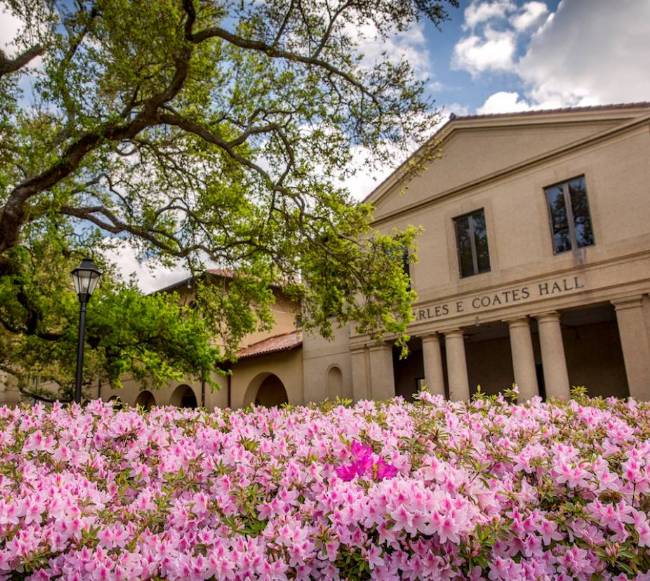LSU, Gov. Edwards Celebrate Five-Year Anniversary of World-Class Center for River Studies
February 24, 2023
BATON ROUGE – Gov. John Bel Edwards joined officials from Louisiana State University (LSU), the Coastal Protection and Restoration Authority (CPRA), the Baton Rouge Area Foundation (BRAF), and local and federal elected officials, including U.S. Rep. Garret Graves, to celebrate the five-year anniversary of the LSU Center for River Studies (CRS).

Since opening in 2018, the CRS has hosted more than 15,000 visitors, including federal and state politicians, scientists and engineers from around the world, coastal advocates, students and educators of all ages, artists, and many more.
“I am beyond proud of the collaborative efforts of some of our best and brightest students and the team at CPRA that have led to the important and transformative work that has been done by CRS for the last five years,” said Gov. Edwards. “Since we cut the ribbon and opened the doors, they have utilized this center and the model it houses to research, analyze, and address the issues we face along the Mississippi River. The work being done here is vital to maintaining our way of life and ensuring that communities can continue to live, work, and flourish along the river for decades to come.”

The CRS is home to the 10,000-square-foot Lower Mississippi River Physical Model, an invaluable tool that is managed by CPRA staff and operated by LSU. Its primary goal is to help planners, scientists, and engineers obtain a better understanding of sediment management in the lowermost Mississippi River. The modeling data will directly inform the planning and design of projects aimed at controlling flooding, sustaining and rebuilding land, and preserving communities and industries along the river.
The research being conducted is not only beneficial to the next generation of engineers, geologists, and river experts who train using the model, but also to CPRA.
“In the last five years, CPRA has translated research produced by the CRS into actionable science and engineering that has improved the lives of South Louisianans,” said CPRA Chairman Chip Kline. “Two major projects – the Mid-Barataria Sediment Diversion and the River Reintroduction into Maurepas Swamp – recently received authorizations from the U.S. Army Corps of Engineers. Both of these projects have been studied extensively using the model. We plan to continue using the model to help us make decisions on how to operate those diversions once the structures are completed. Being able to study when and how to capture sediment to build land is a game changer for restoring our coast.”
During the celebration event, Gov. Edwards and Kline placed commemorative gold pins into the Center’s Progress on the Ground map to mark the sites of the Mid-Barataria Sediment Diversion and the River Reintroduction into Maurepas Swamp, celebrating the victories of moving these two pivotal projects forward.
The state-of-the-art model uses data from U.S. Army Corps of Engineers monitoring stations located along the Mississippi River to simulate river flow, stage, and sediment transport for 179 miles from Donaldsonville to the Gulf of Mexico. The model allows student researchers to run tests equal to one year of natural river time in about an hour of lab time, which gives students the opportunity to learn how scenarios they test will impact the river far into the future.

“At LSU, our students have the unique opportunity to learn from world-renowned faculty at top research facilities such as the LSU Center for River Studies,” said LSU Executive Vice President & Provost Roy Haggerty. “We are building the talent pipeline for coastal Louisiana and dynamic coasts around the world.”
The first floor of the CRS is utilized as an exhibit space that aims to help relay the importance of the Mississippi River Delta to Louisiana’s environment and economy. Visitors can learn more about Louisiana’s land loss crisis and ongoing coastal restoration projects across the coast aimed at reducing risk.
In the last five years, the CRS has added two interactive features – virtual reality headsets and augmented reality sand tables -- to help visitors visualize the issues and the work being done to protect and restore our coast. Visitors are encouraged to immerse themselves in footage from projects CPRA has begun or completed along the coast using virtual reality headsets. Two augmented reality sand tables provide a hands-on experience that allows visitors to move sand, create flowing rivers, and produce rain to better understand how elevation and topography impact the way water moves.
The River Model can also be used as a tool to teach visitors about the work being done by CPRA. Twenty high resolution digital projectors are utilized to project aerial photographs, project simulations, videos, and more onto the model, bringing the science to life for visitors.
“It’s one thing to tell people about our coastal crisis using facts and figures, but showing them land disappearing on a map or how we can rebuild that land is irreplaceable,” said CPRA Executive Director Bren Haase. “Touring the CRS facility and viewing the Mississippi River Model really helps people understand what we are up against and why our work is so important.”
During the Covid-19 pandemic public access to tour the CRS was limited for safety reasons. CPRA has begun conducting group tours again and will resume participation in First Free Sunday on March 5, 2023.
The CRS is located just across the levee from the Mississippi River on the Water Campus, which is also home to the CPRA headquarters building and the Water Institute of the Gulf. The Water Campus was funded and built through a partnership between the State of Louisiana, the City of Baton Rouge, and BRAF with the goal of positioning the city and state as an epicenter for coastal restoration and sustainability research.
“The Water Campus has quickly made Baton Rouge a gathering place for scientists and engineers in the coastal solutions sector globally,” said Chris Meyer, BRAF President and CEO. “As we learn more about how to effectively combat our land loss crisis in Louisiana, the experts at the Water Campus are exporting those solutions to the rest of the world. I’m amazed, but not surprised, to see the outsized impact research from the Center for River Studies is having on coastal resiliency through CPRA’s implementation.”
More information on scheduling tours of the Center for River Studies can be found at https://coastal.la.gov/center-for-river-studies/group-tours/
CPRA would like to extend special thanks to our partners -- LSU, BRAF, and Restore the Mississippi River Delta -- for their support of the CRS five-year anniversary celebration event.


